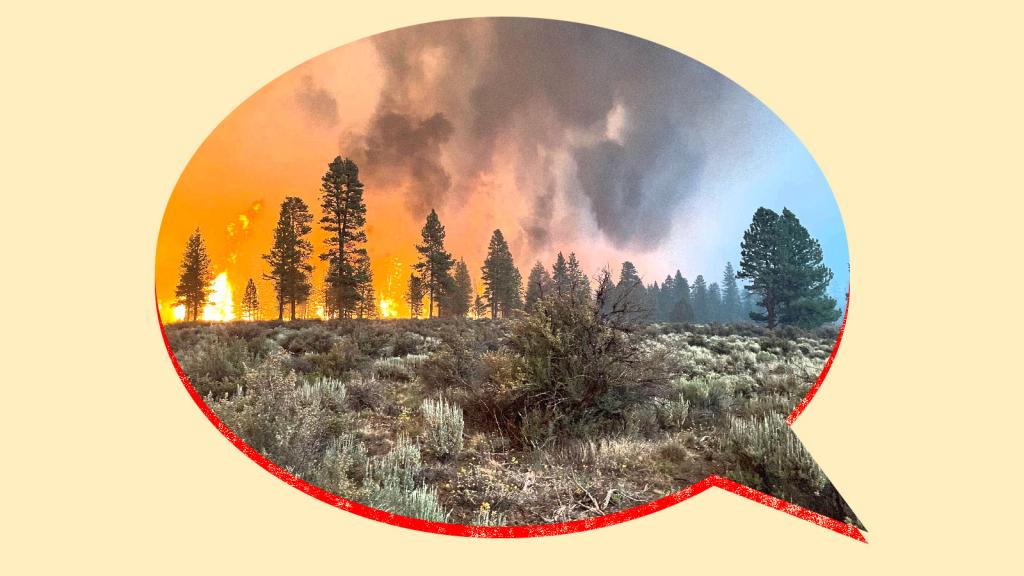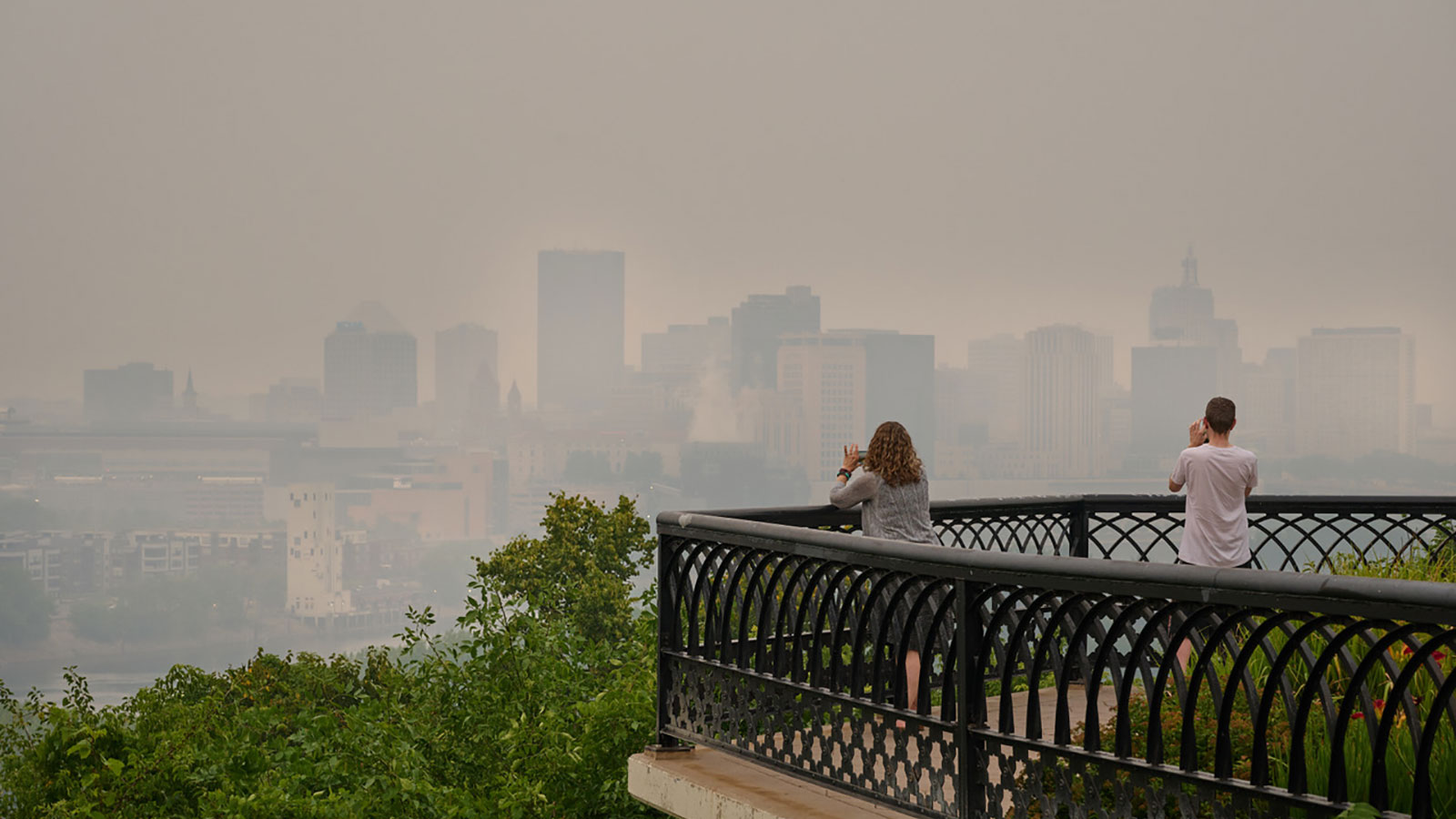Last Thursday, my family took turns standing in our backyard, staring upward in horror. Smoke so thick that it dimmed the sun obscured the Minneapolis sky, and the smell of a campfire hung in the air. Hundreds of miles north of us, across the Canadian border, over 150 fires were raging in Northwest Ontario, sending massive smoke plumes to settle over Minnesota and Wisconsin.
While the sight and smell of thick smoke might be familiar in other parts of the country, officials from the Minnesota Pollution Control Agency called the event ‘unprecedented’ for the state. Last Thursday, the state recorded its worst-ever air quality index reading, clocking in at 422 micrograms per cubic meter in St. Cloud, and issued an air quality warning that remained in place through 3pm on Tuesday.
The smoke that blanketed the state through the weekend was notable particularly for how low it was to the ground, Ryan Stauffer, an air pollution researcher at NASA, told the Washington Post. “It is much more typical for smoke to remain well above the surface in the Midwest to Eastern United States,” said Stauffer, “it is extremely unusual and the amount of smoke at the surface may be unprecedented in recent decades.”
More smoke may be yet to come across the country, as wildfire season in the U.S. and Canada alike is far from over. All month, smoke from wildfires in Canada and the American West has been spreading as far as the midwest and East coast. Climate change is producing a vicious cycle of heat, drought, and fire in the American West. In Canada, 2021 has been particularly bad for wildfires in Ontario, due also in part to drought conditions; in Ontario alone, over half a million acres have burned, leading to thousands of evacuations from First Nations communities.
As anyone who lives with fire knows, wildfire isn’t just a public health threat to those who live directly in its path: smoke from wildfires is one of the ways that climate change is making air quality worse. Where there’s smoke, there’s pollution; and when air quality is bad, you shouldn’t go outside if you can help it. Wildfire smoke contains a stew of super fine particles from all that is burned in its path: including trees, homes, and other debris. These tiny particles, especially those smaller than 2.5 microns — also known as fine particulate matter, or PM 2.5, is the primary culprit of bad air quality following fires and can pose a serious threat to human health.
When you breathe in PM 2.5, these fine particles can penetrate deep into your lungs, triggering inflammation. From your lungs, PM 2.5 can cross into your bloodstream, circulating through your body. “These particles can then have toxic effects throughout your body, not only in your lungs, but also in your cardiovascular system, your respiratory system, and recent work has shown that they can also affect your neurological system,” said Jesse Berman, assistant professor of environmental epidemiology at the University of Minnesota. “It can really have a whole systemic effect on your body.”
Breathing in PM 2.5 from wildfire smoke can therefore lead to a whole range of symptoms, including a sore throat, coughing, and itching eyes. It can also exacerbate asthma and lung disease, has even been linked to low birth weight for women exposed to wildfire smoke during pregnancy, and increased risk of heart attack.
As climate change accelerates, producing drier and hotter conditions, wildfires are getting bigger and stronger. This means we can expect more smoke — and more air pollution, says Berman. A 2021 report from the American Lung Association showed that the number of Americans exposed to short term PM 2.5 pollution increased by 1 million compared to the previous report, driven in large part by increasing exposure to wildfire smoke.
“Unfortunately, these types of events are exactly what has been predicted to take place under climate change,” said Berman, “we’re really seeing it play out in real life.”



